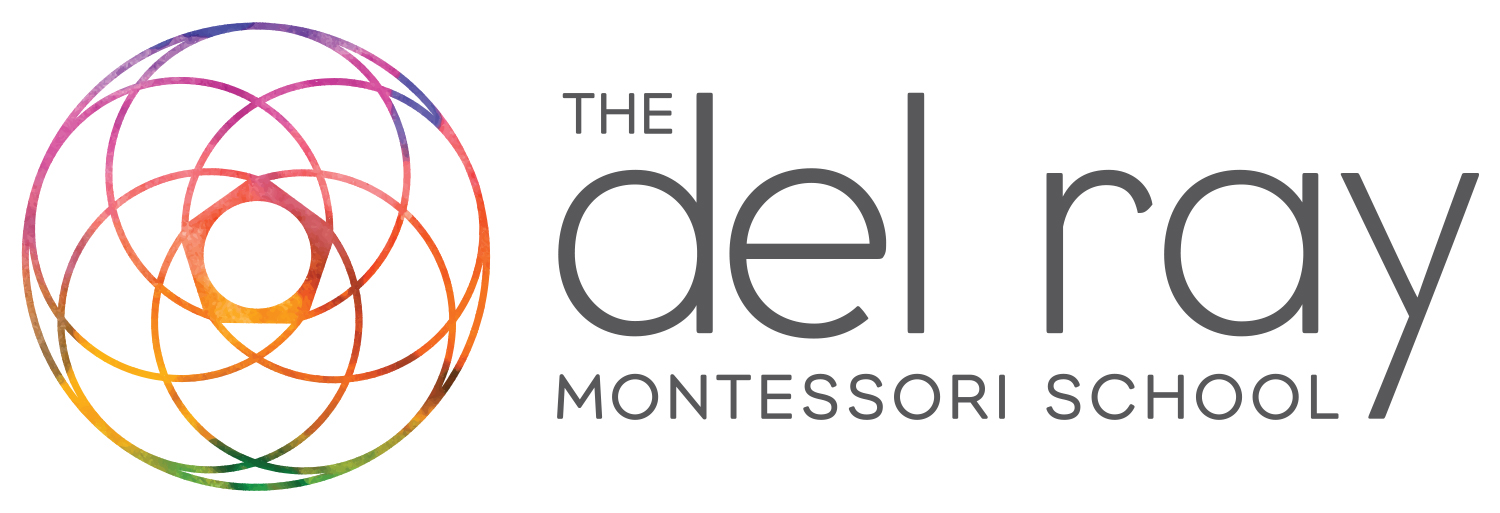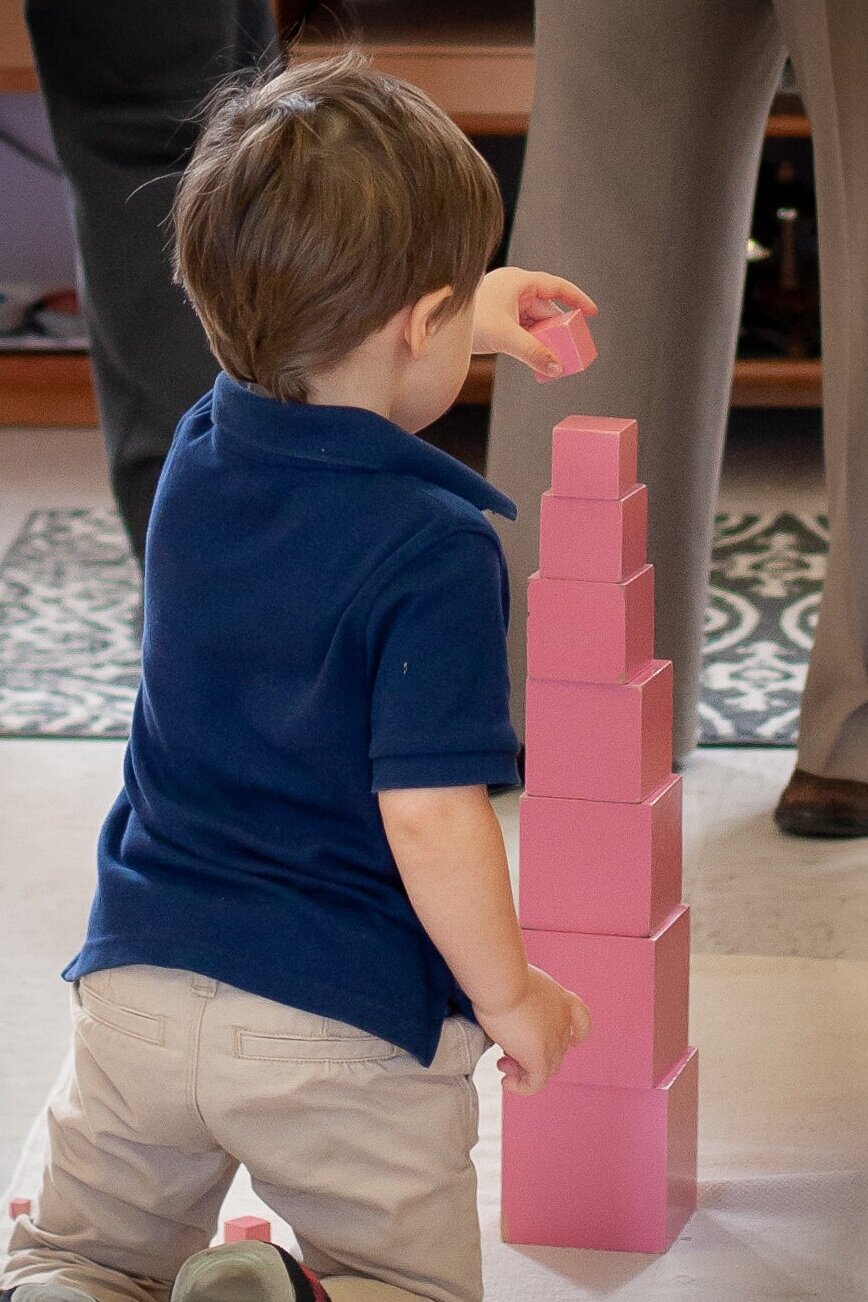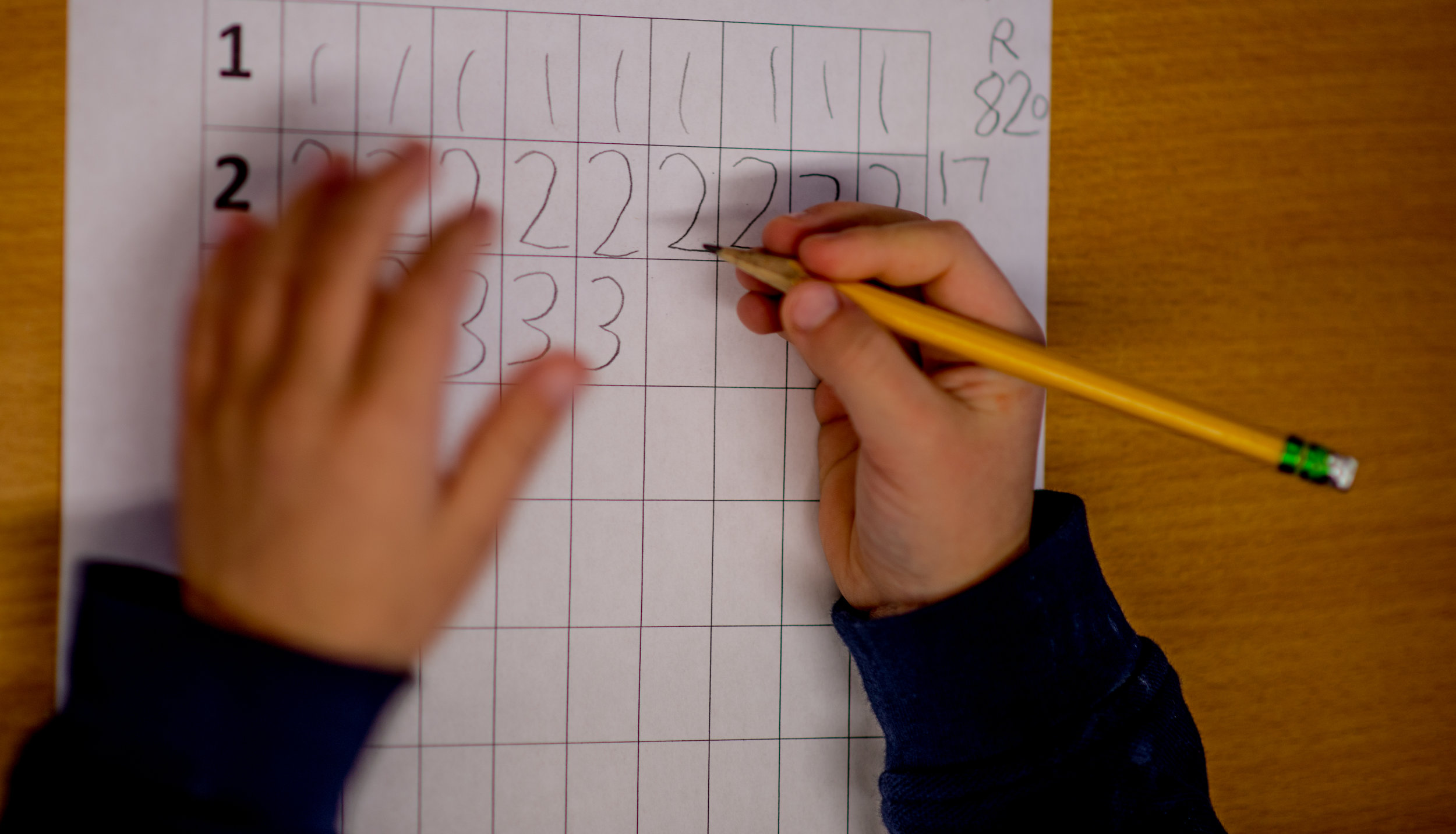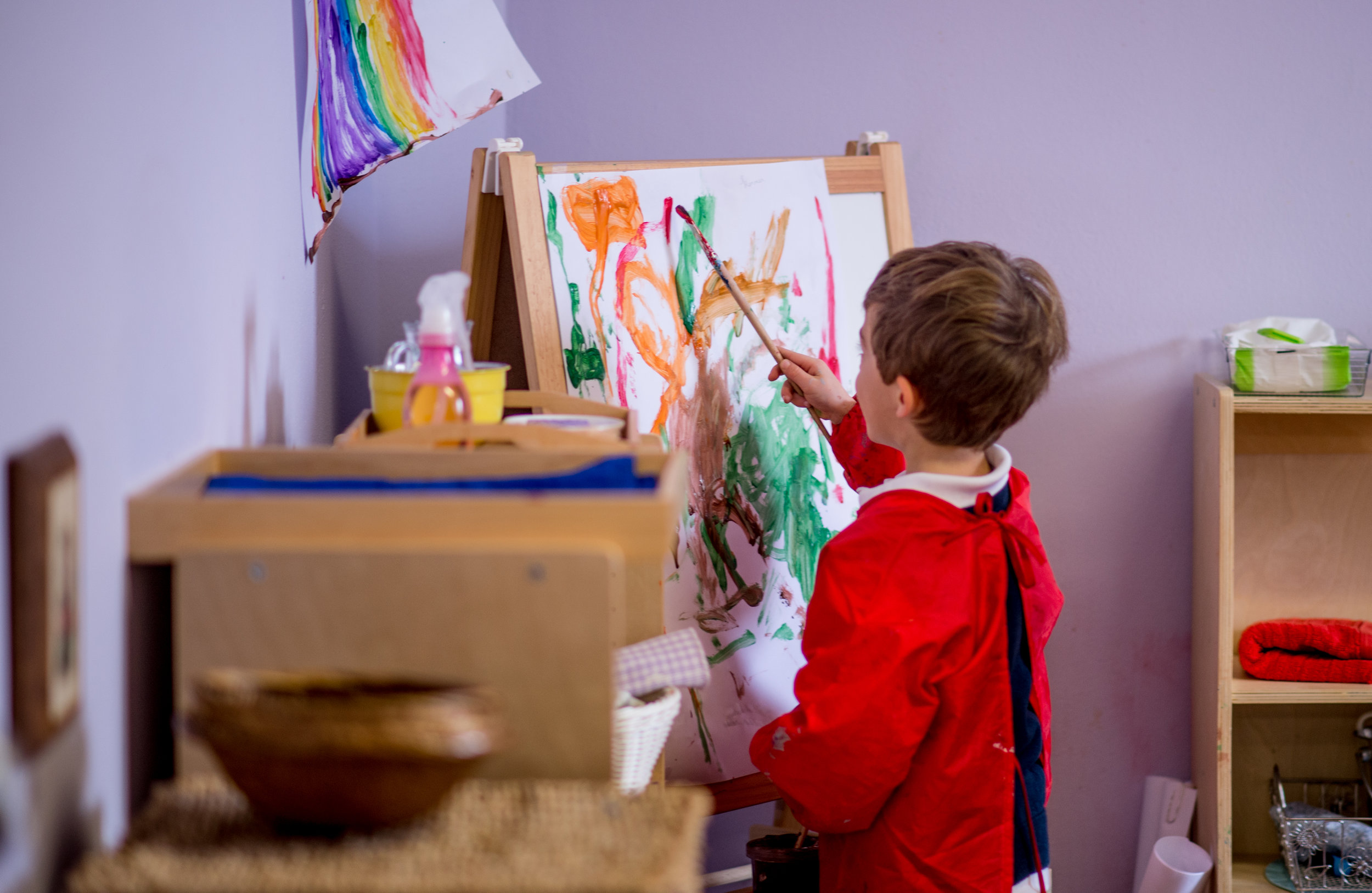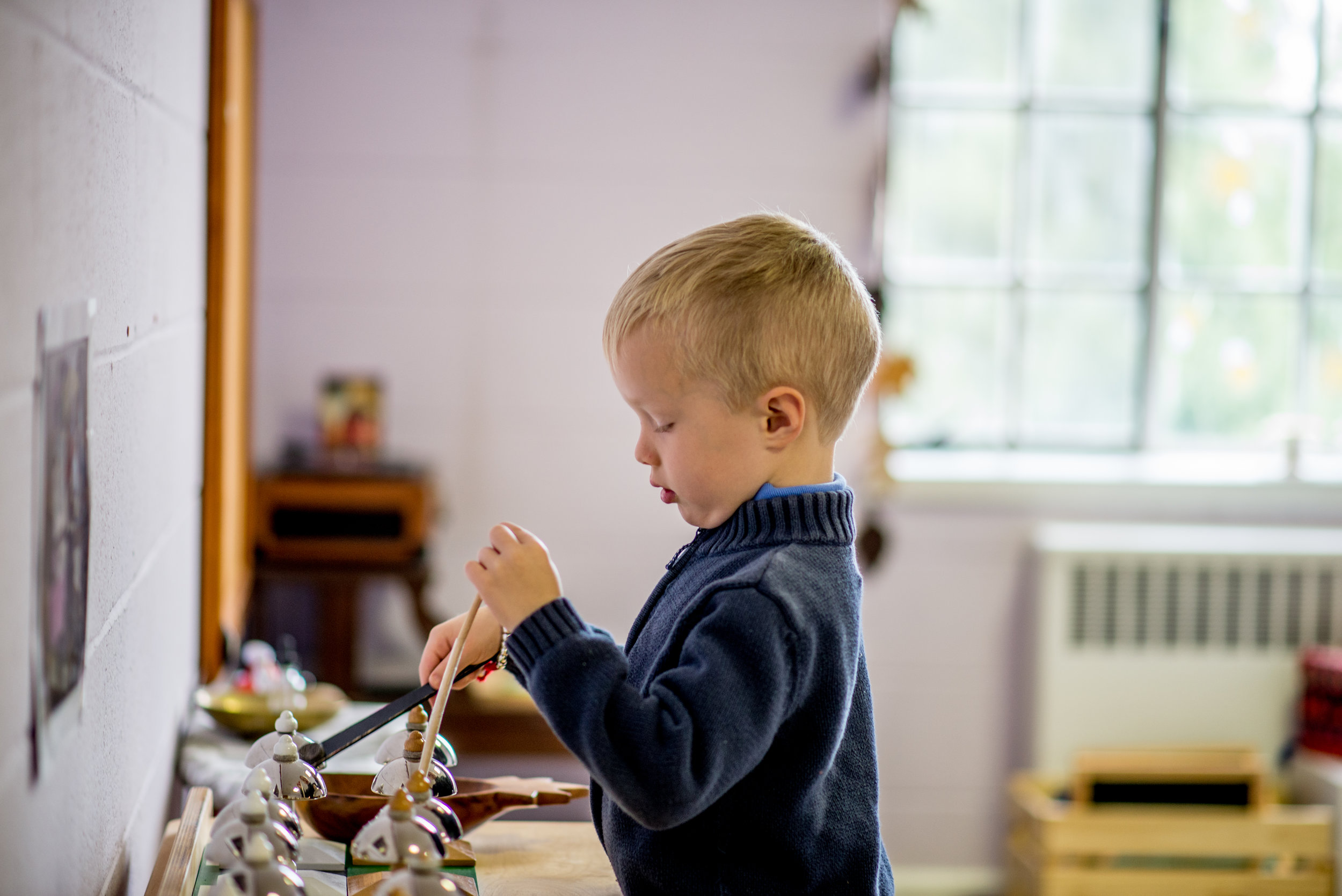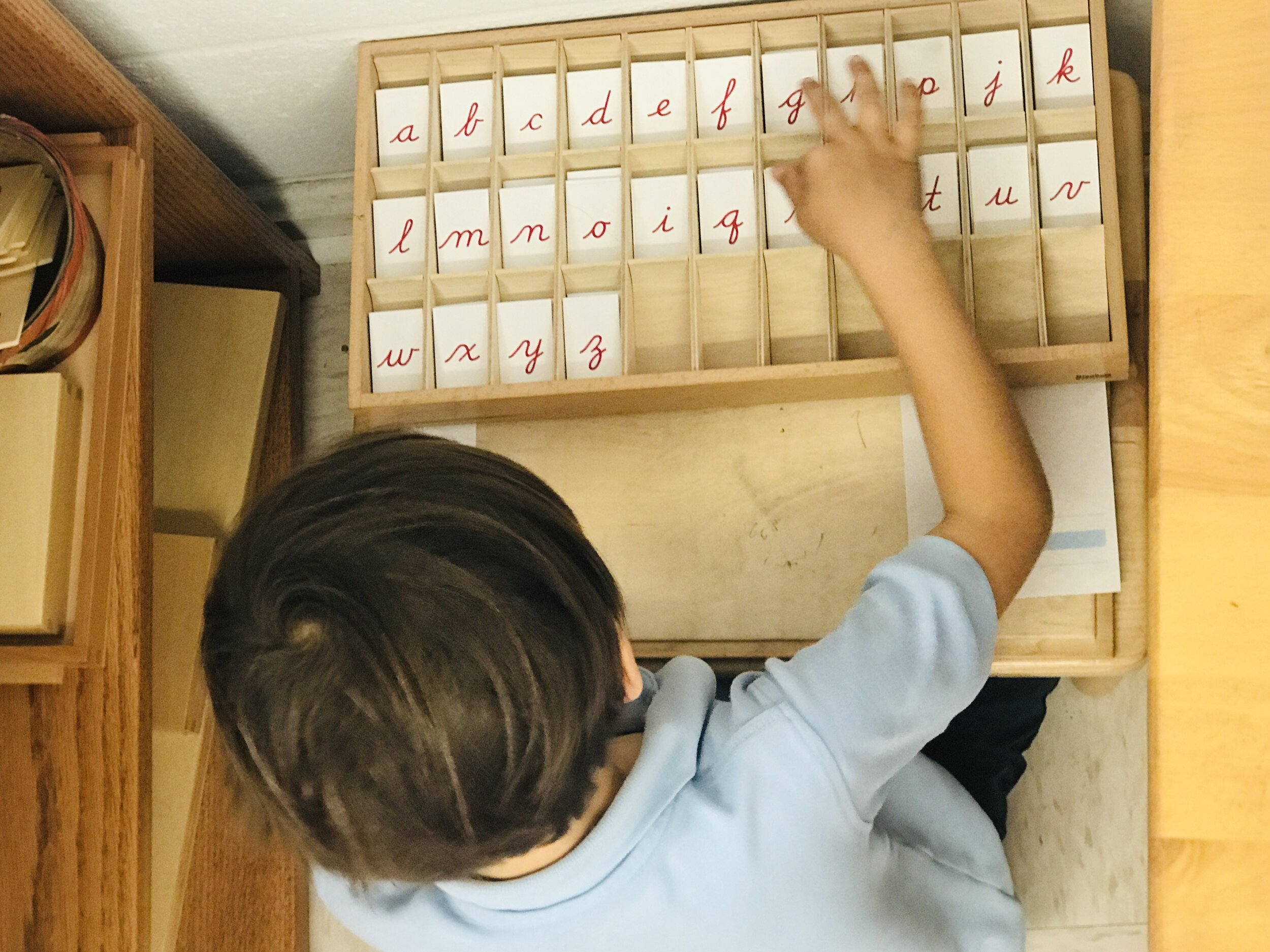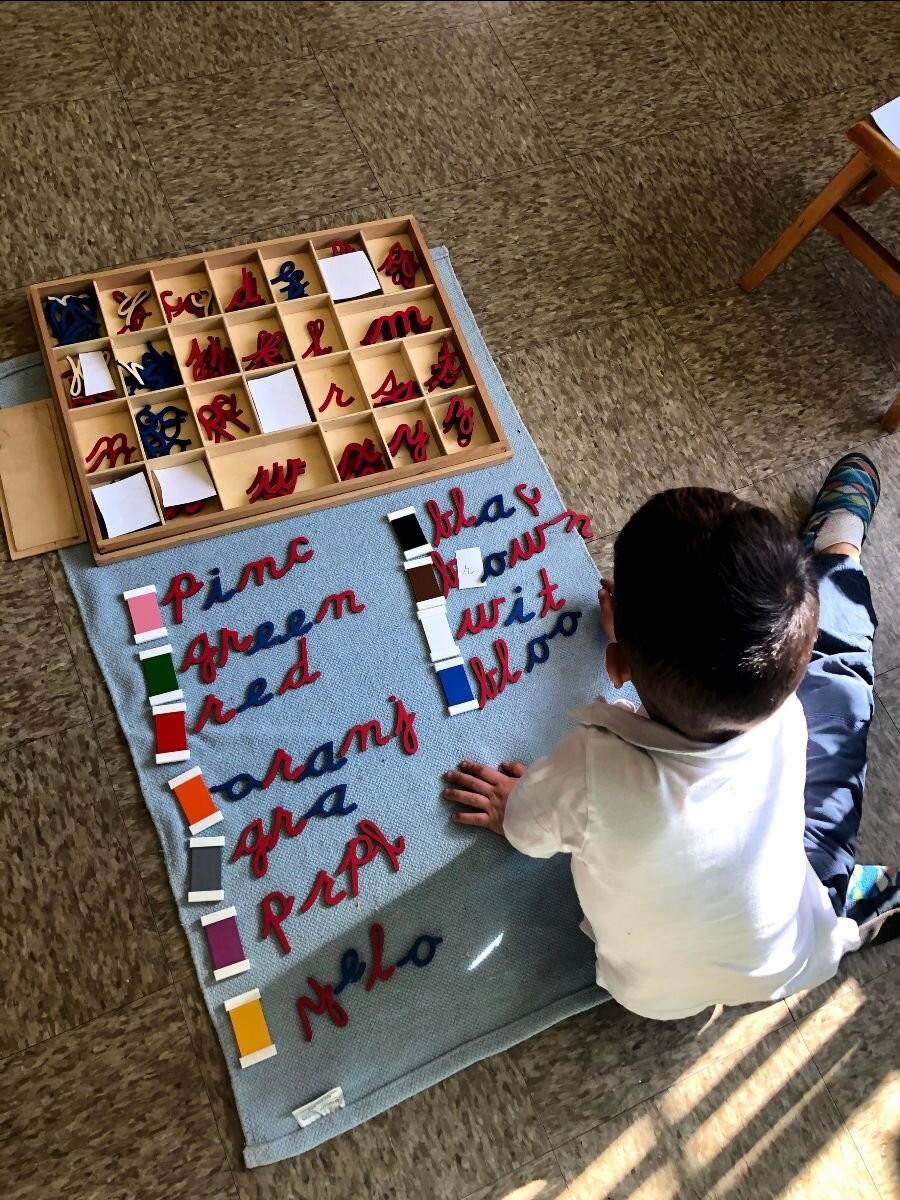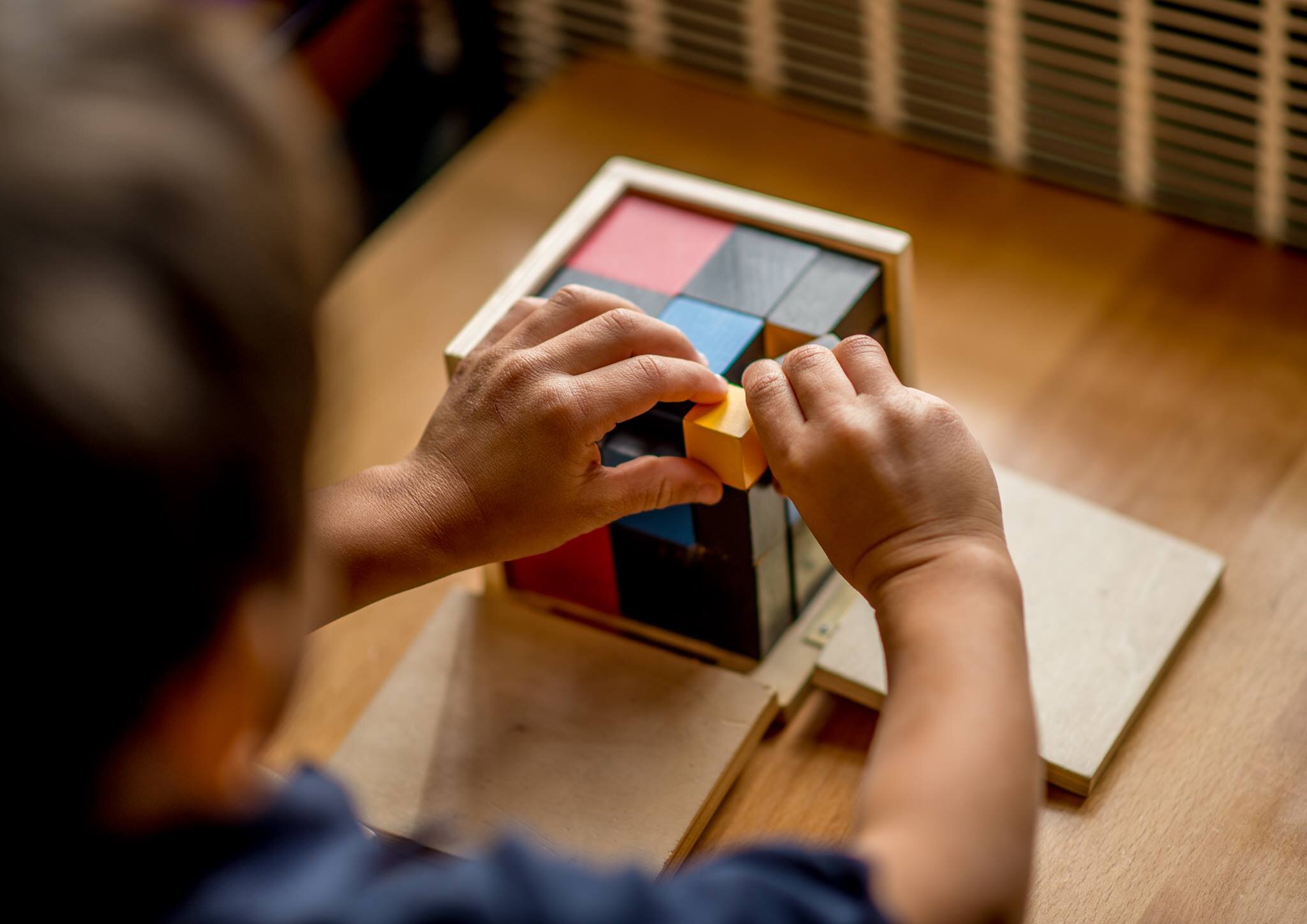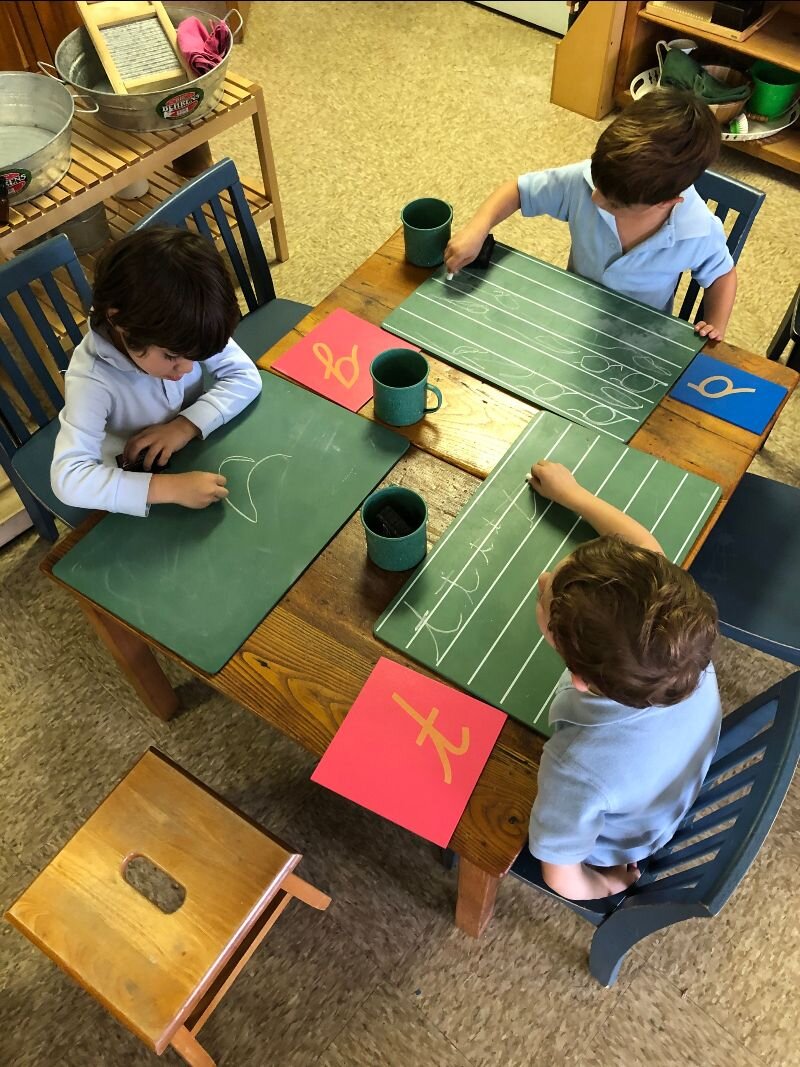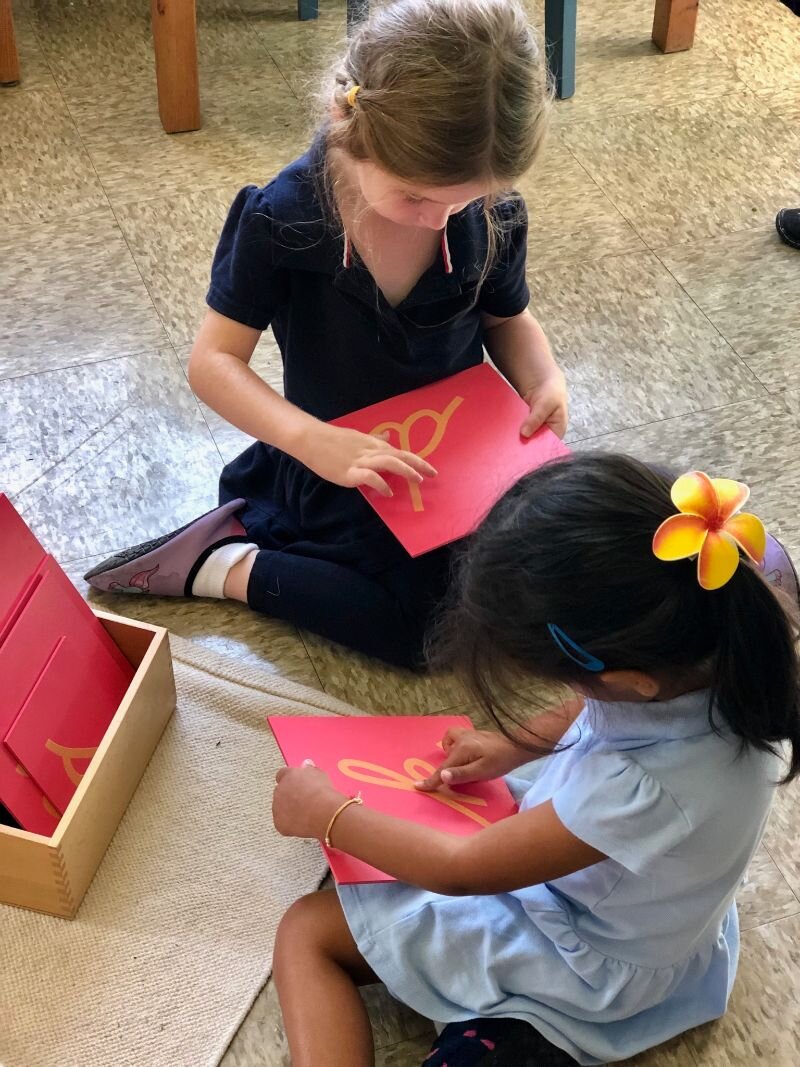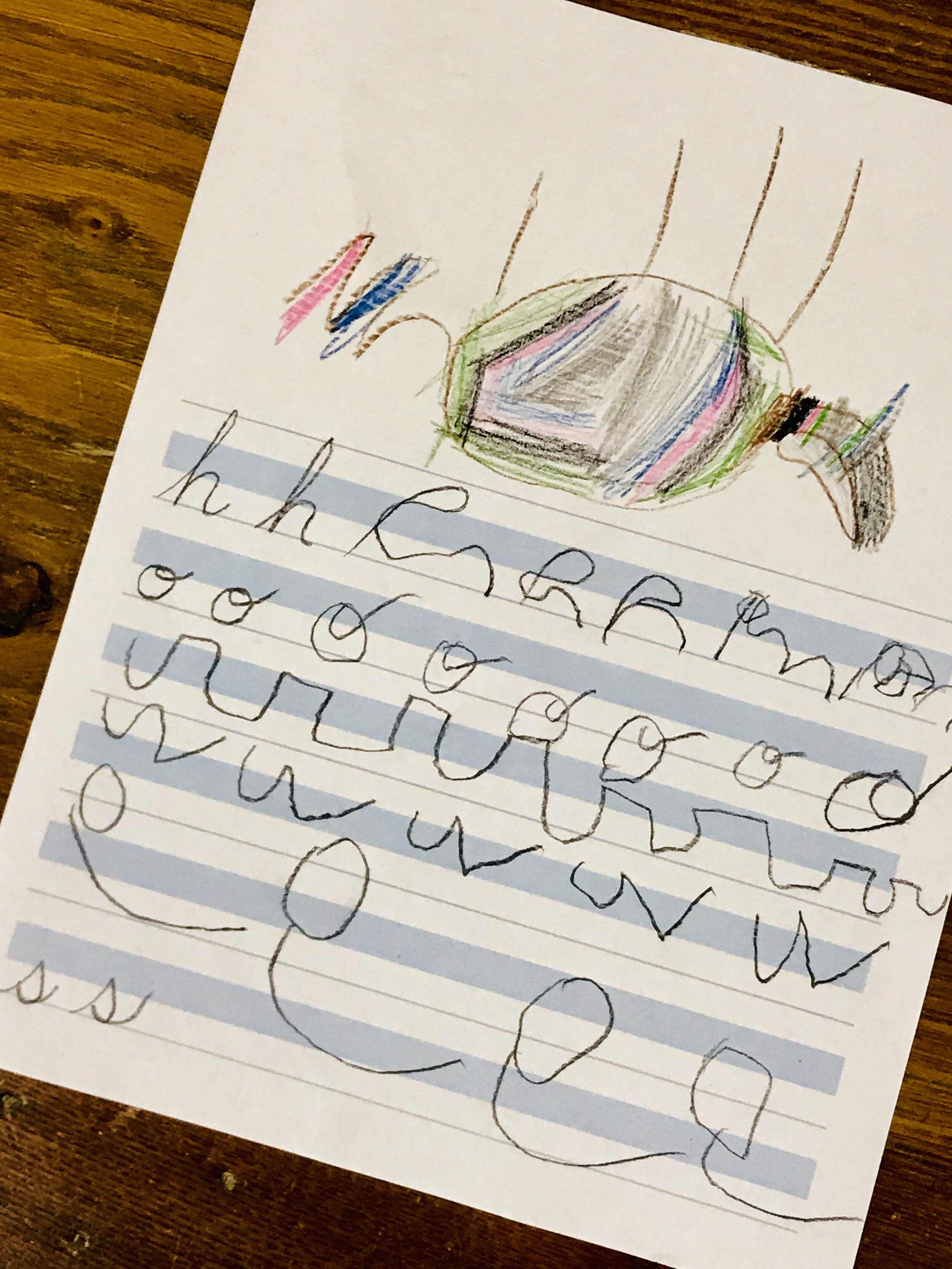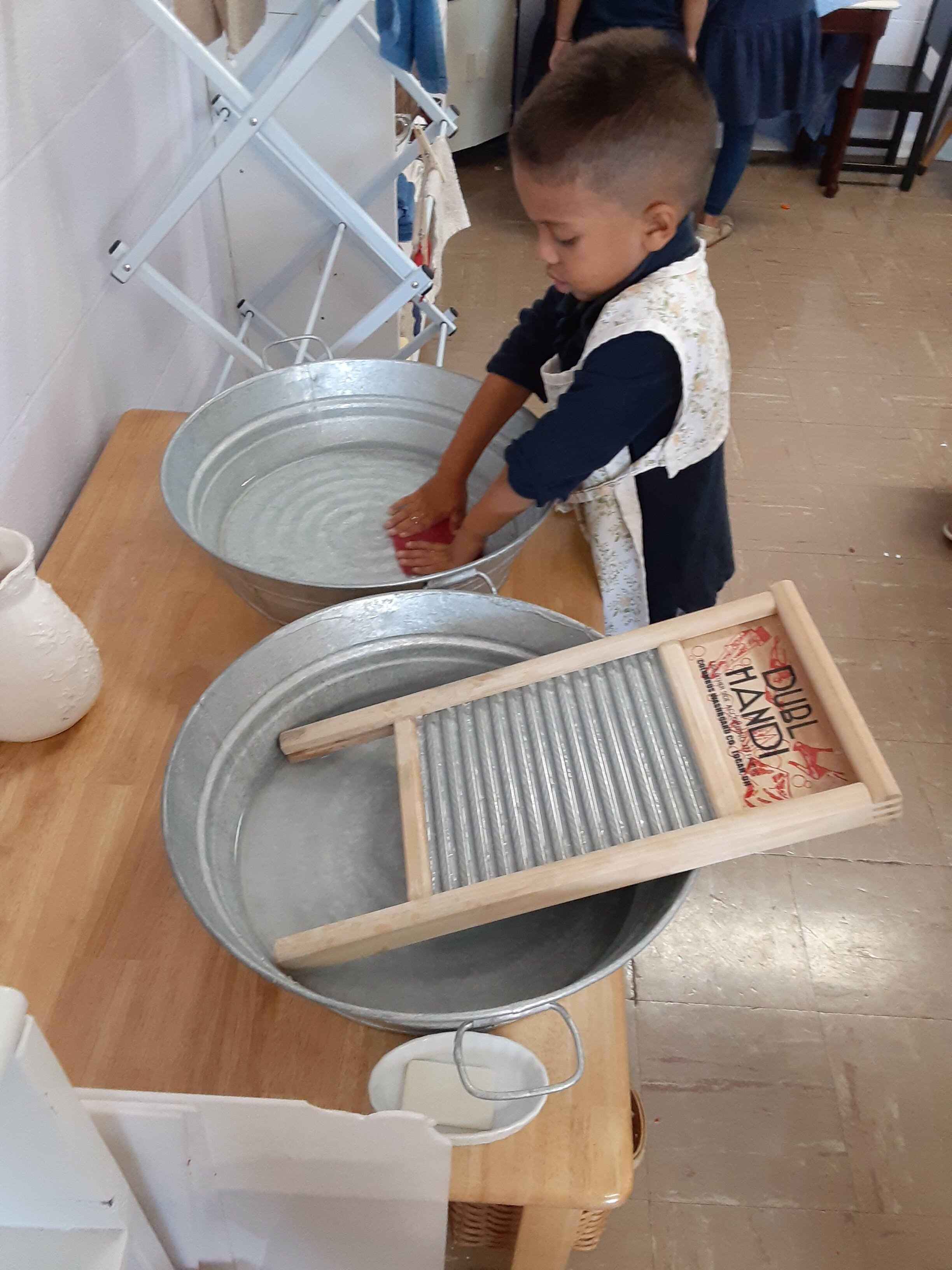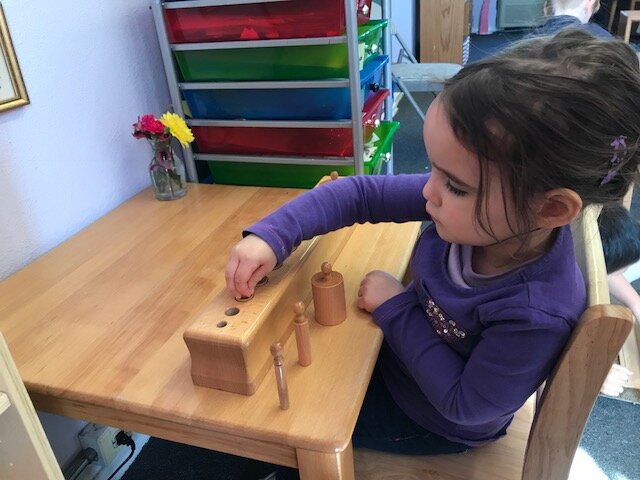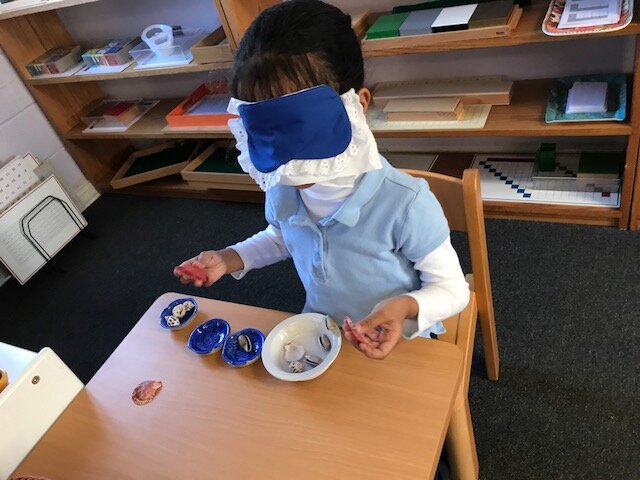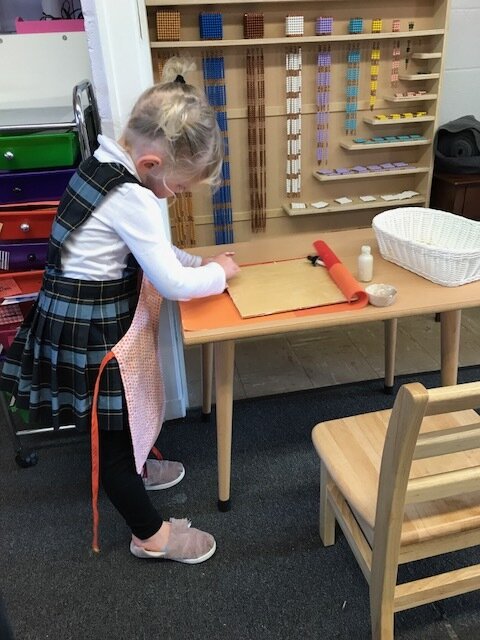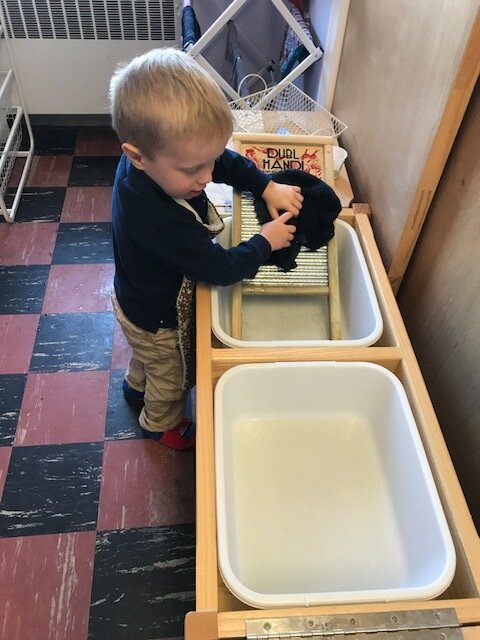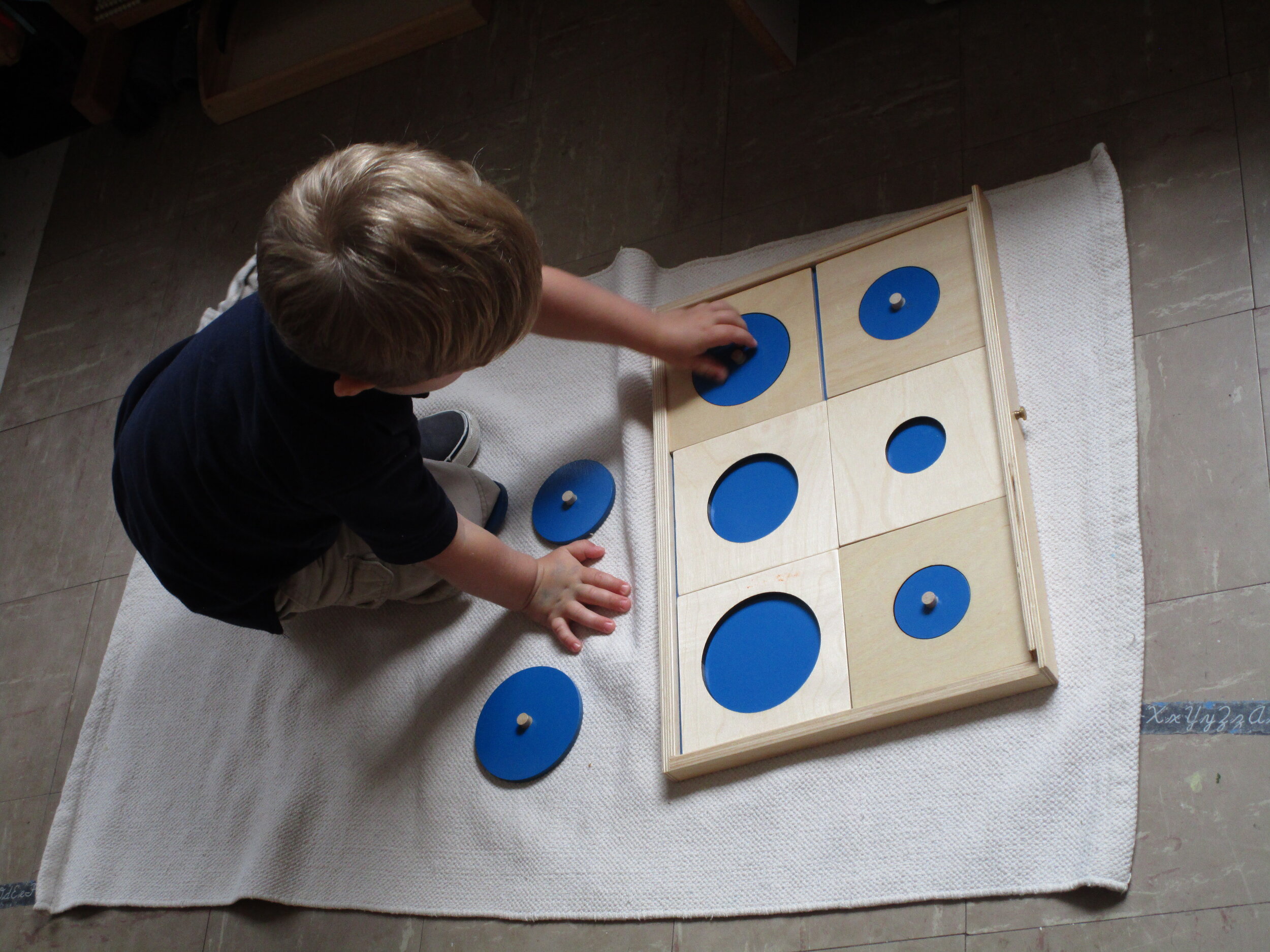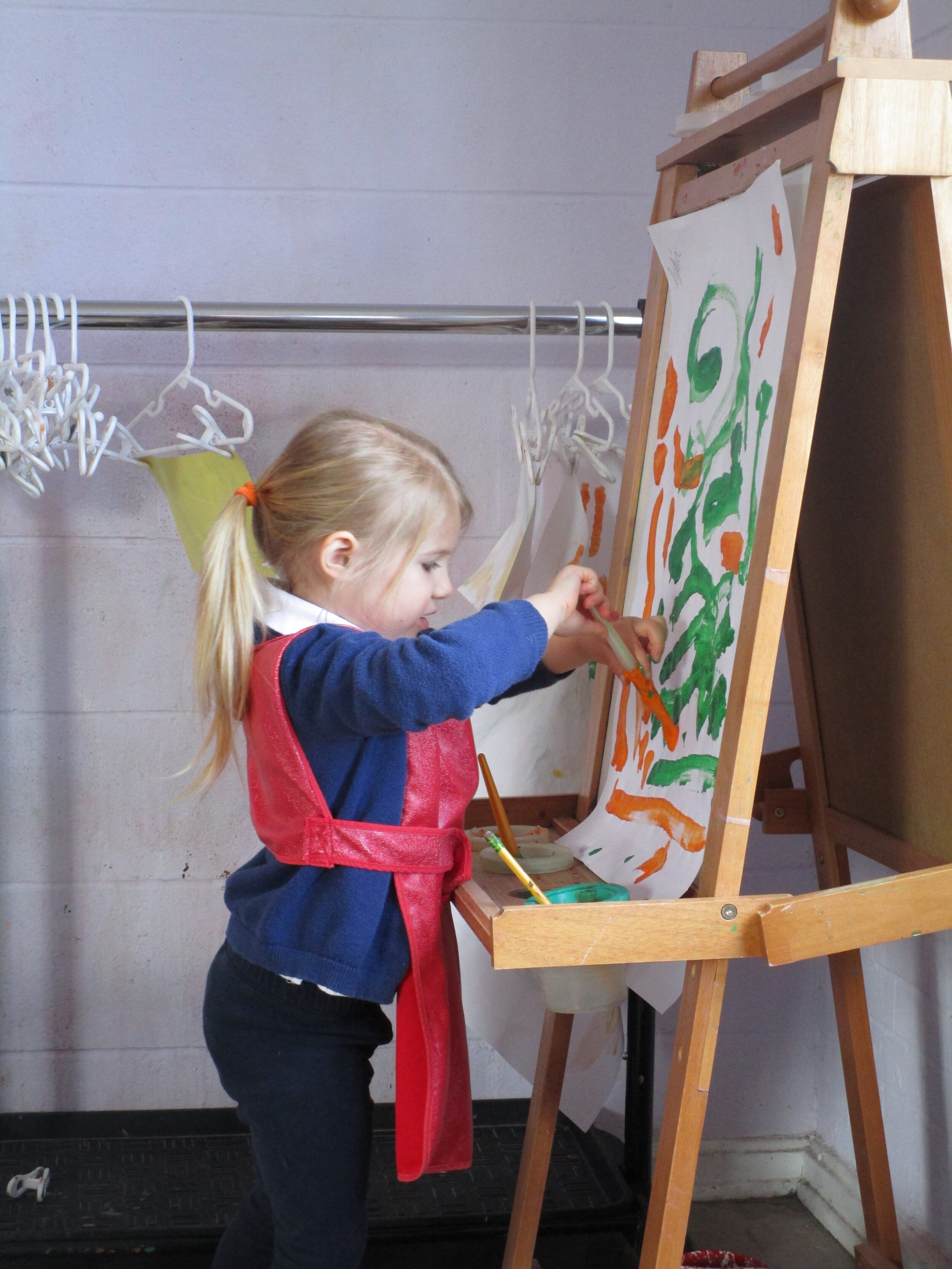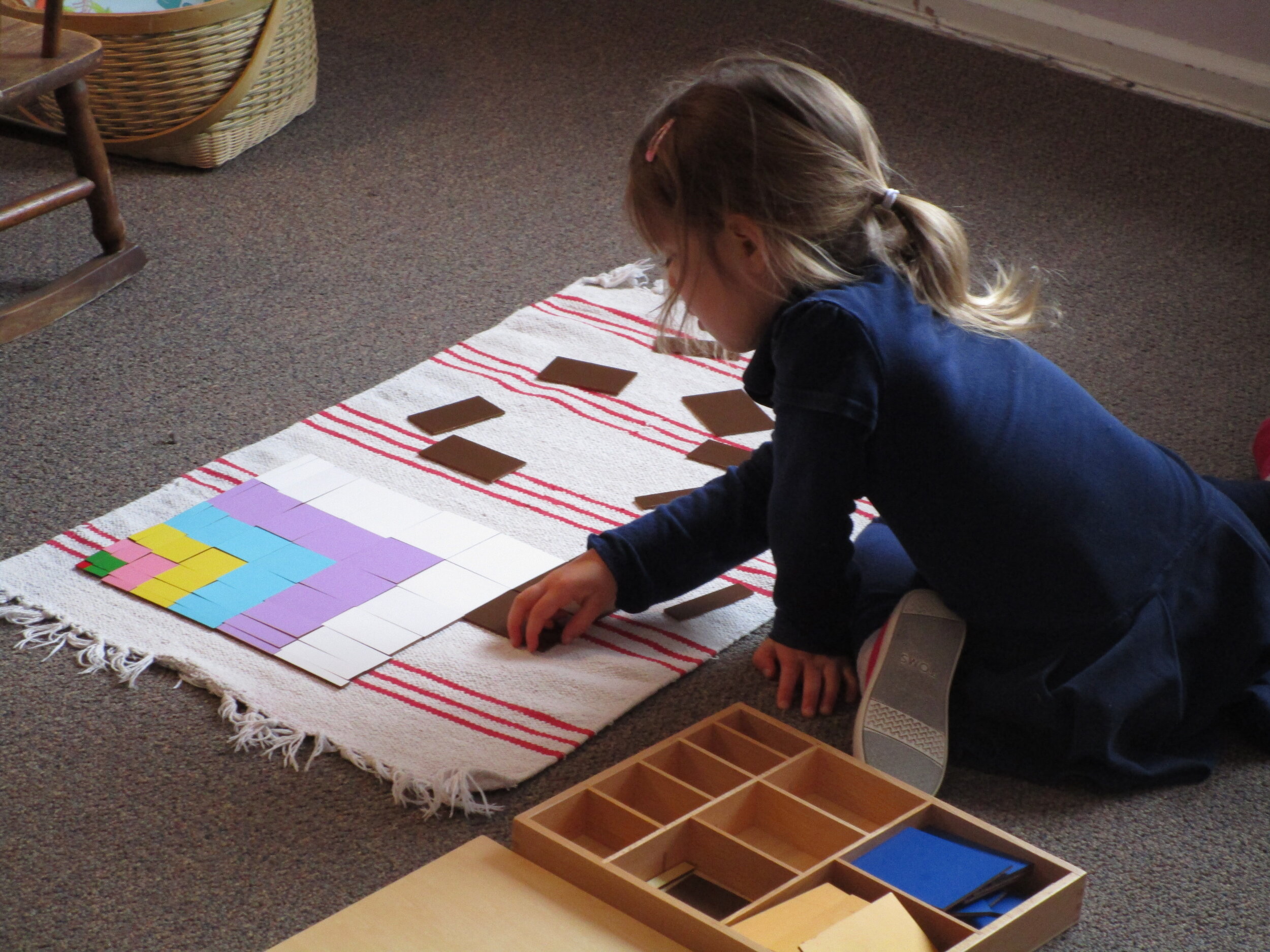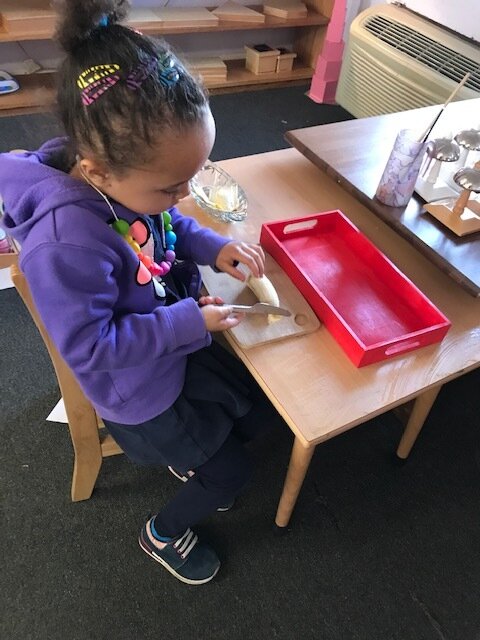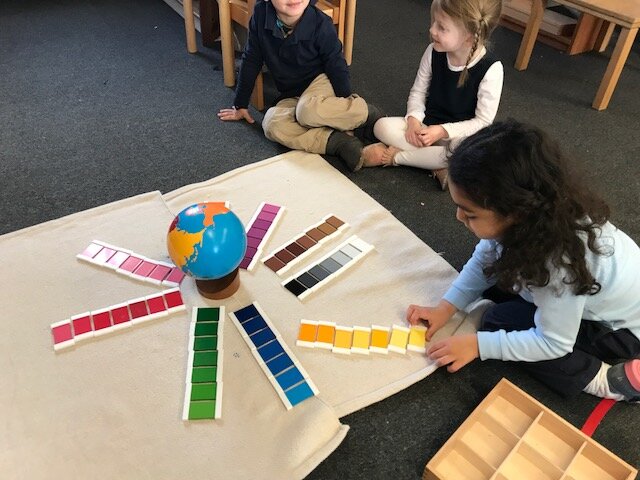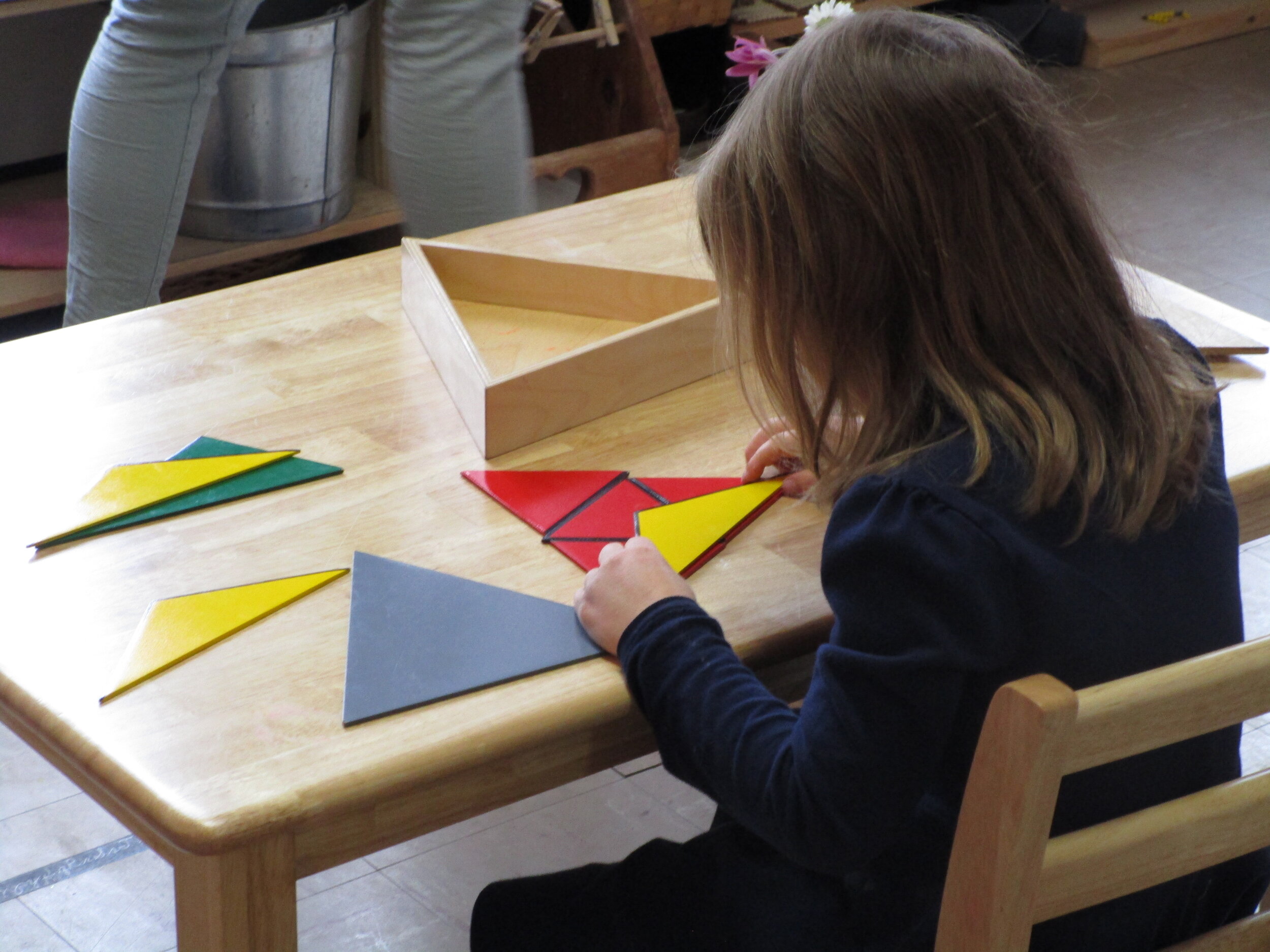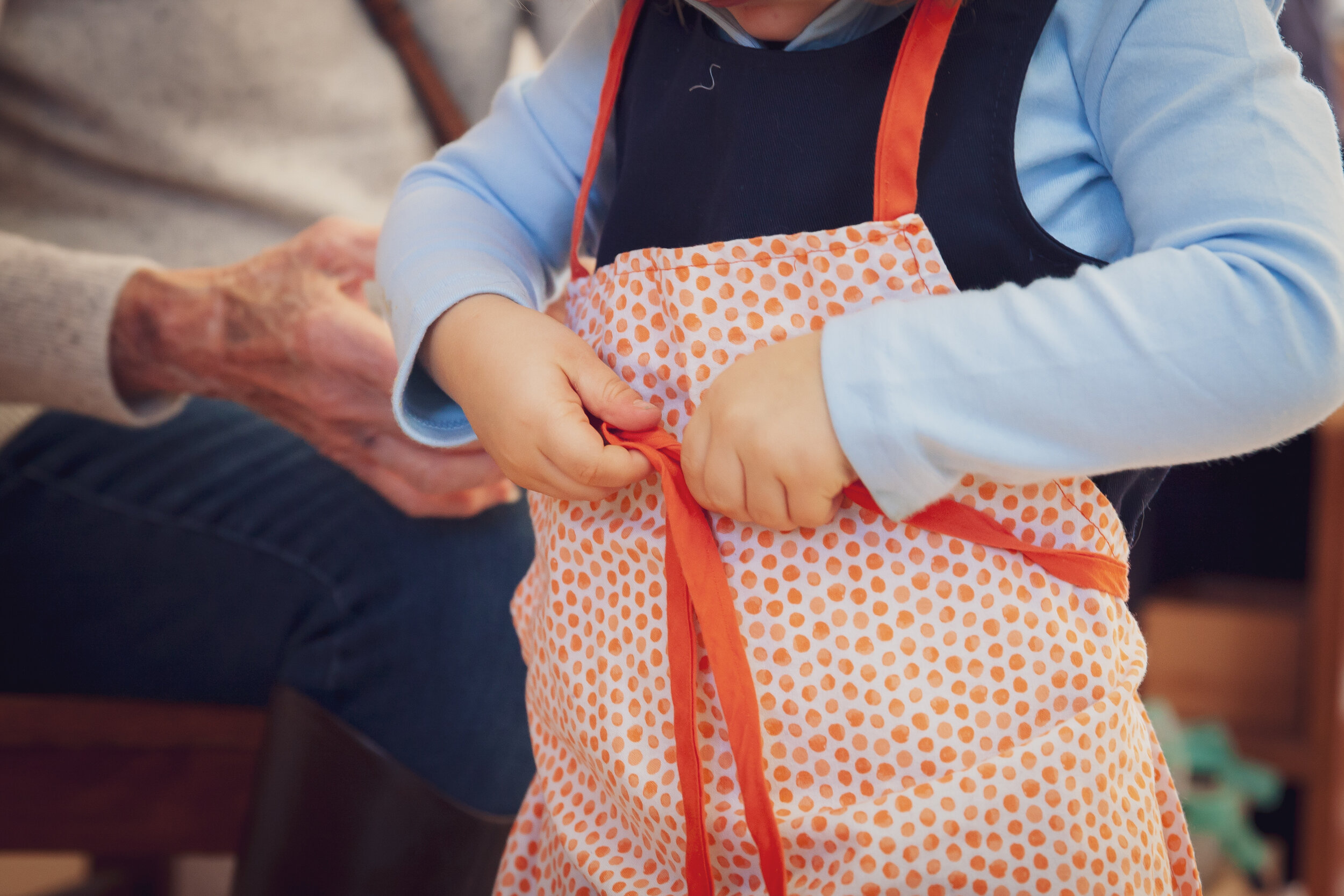Music - Materials and activities that introduce pitch, reading, and writing music with the bells. The activities offer experiences in music history and theory. Other instruments are introduced as well as rhythm activities.
Movement - The entire classroom offers the child the freedom to move around the room with flexible seating as well as fine and gross motor development materials. In addition to outside play, we offer a variety of movement-based opportunities to the children who elect this kind of activity during the work cycle in the mornings or afternoons. These activities include materials that foster balance, strengthening, coordination, and gross motor movement using equipment such as scooter boards, exercise balls, and balance disks. Providing our students with multiple opportunities for movement within their classroom environments allows our students to take movement breaks when needed, rather than only during outside play times.
